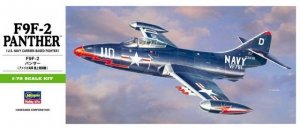-
Załączniki bezpieczeństwa
Załczniki do produktuZałączniki dotyczące bezpieczeństwa produktu zawierają informacje o opakowaniu produktu i mogą dostarczać kluczowych informacji dotyczących bezpieczeństwa konkretnego produktu
-
Informacje o producencie
Informacje o producencieInformacje dotyczące produktu obejmują adres i powiązane dane producenta produktu.Hasegawa
-
Osoba odpowiedzialna w UE
Osoba odpowiedzialna w UEPodmiot gospodarczy z siedzibą w UE zapewniający zgodność produktu z wymaganymi przepisami.Hobby 2000 Sp. z o.o.Tadeusza Kościuszki 227Katowice,40-600Polska
Hasegawa 02232 SAAB AJ-37 Viggen 1/72
Plastikowy model samolotu bojowego do sklejania. Zestaw nie zawiera kleju ani farb.
Saab JA 37 Viggen – szwedzki samolot myśliwsko-szturmowy zaprojektowany w 1964 roku przez wytwórnię lotniczą SAAB i produkowany w latach 1970–1990 jako następca myśliwca J 35 Draken.
Pierwsze próby skonstruowania samolotu mającego zastąpić Drakena podjęto w latach 1952–1957 pod kierunkiem projektanta fińskiego Aarnego Lakomy. Prace nad budową prototypu rozpoczęto w 1964 roku, a oblatano go 8 lutego trzy lata później. Celem projektu było zbudowanie jednosilnikowego samolotu z bardzo mocną jednostką napędową, posiadającego zdolności krótkiego startu i lądowania (STOL), który mógłby startować i lądować na zaimprowizowanych lotniskach polowych w postaci dróg lub autostrad w przypadku zniszczenia bronią jądrową głównych lotnisk. Inne wymagania poza zdolnością do lotów z prędkościami naddźwiękowymi na niskim pułapie i dwukrotną prędkością dźwięku na dużej wysokości to umiejętność krótkiego lądowania przy niskich kątach natarcia, w celu uniknięcia uszkodzeń podczas użytkowania polowych pasów startowych.
The Saab 37 Viggen (Swedish for "the bolt" or "the tufted duck" (see name)) is a retired Swedish single-seat, single-engine, short-medium range combat aircraft. Development work on the type was initiated at Saab in 1952 and, following the selection of a radical delta wing configuration, the resulting aircraft performed its first flight on 8 February 1967 and entered service in 21 June 1971. It was the first canard design produced in quantity.The Viggen was also the most advanced[vague] fighter jet in Europe until the introduction of the Panavia Tornado into operational service in 1981.
Several distinct variants of the Viggen were produced to perform the roles of strike fighter (AJ 37), aerial reconnaissance (SF 37), maritime patrol aircraft (SH 37) and a two-seat trainer (SK 37). In the late 1970s, the all-weather fighter-interceptor aircraft JA 37 variant was introduced. In November 2005, the Viggen was retired from service by the Swedish Air Force, the only operator, having been replaced by the newer Saab JAS 39 Gripen.
Viggen has two major meanings in Swedish and the aircraft's name alludes to both.
The first meaning refers to "åskvigg", which is modernly translated to "thunderbolt". Traditionally however the word refers to prehistoric stone axes found in the ground during the viking age. The scandinavian people of this period thought that these axes had been sent down to earth by the lightning strikes of the god Thor when he hunted giants with his war hammer Mjölnir.It was believed that these axes had magic powers such as lightning protection (since "lightning never strikes the same spot twice"). However with time the word has been transformed to the Swedish equivalent of the English "thunder bolt" and thus the name generally refers to this. Since the name Viggen is missing the "thunder"-part "åsk" and is in Swedish definitive form it should be translated as "the bolt" when referring to this meaning.
The second meaning refers to "vigg", the Swedish word for the tufted duck. This is in reference to its canard configuration as "canard" is French for duck.
















 103 szt.
103 szt.




 1 szt.
1 szt.



 4 szt.
4 szt.